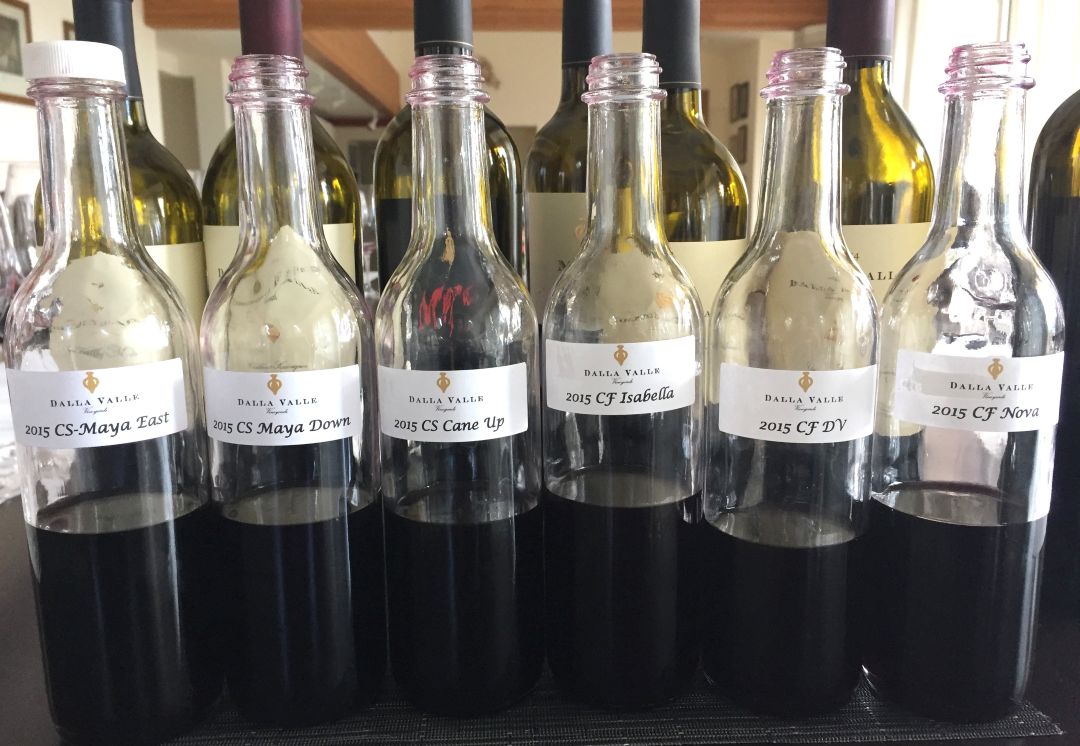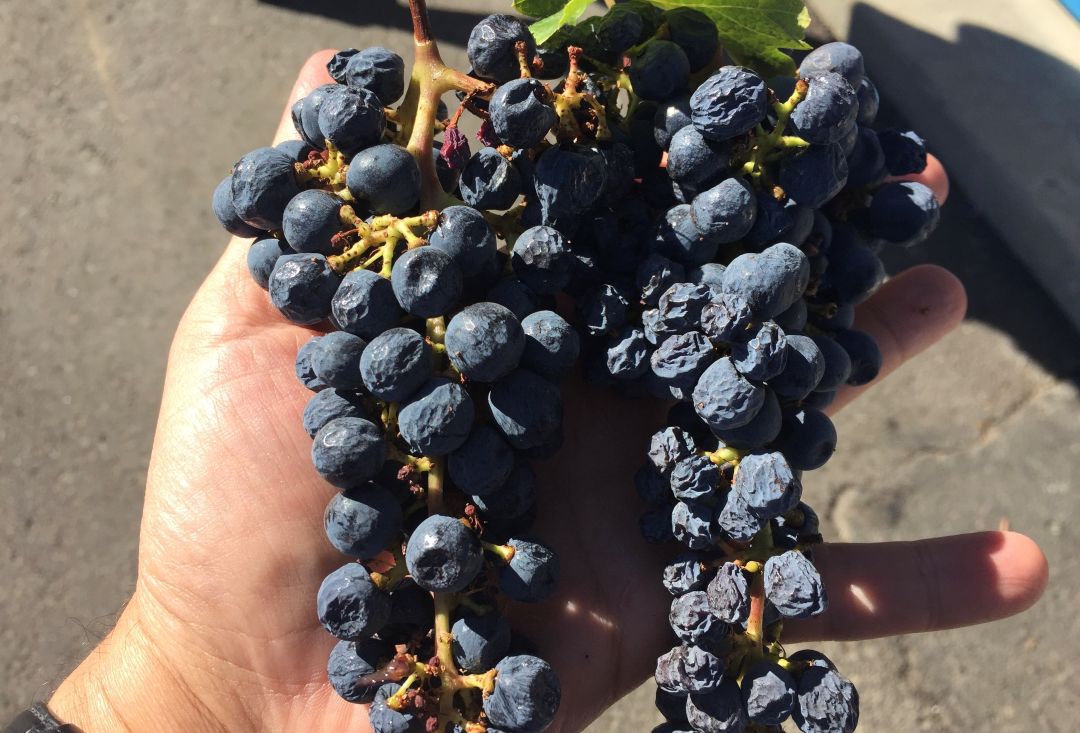Browse using the new Vinous website now. Launch →
Printed by, and for the sole use of . All rights reserved © 2015 Vinous Media
2015 Napa Valley Cabernet Sauvignon: In the Zone
BY ANTONIO GALLONI | NOVEMBER 6, 2025
My annual look at the Napa Valley vintage ten years was so illuminating. Two thousand fifteen is a vintage I have followed since the very beginning. Several trips during the fall of that year allowed me to see everything from fruit on the vine through to harvest, and then very young wines in tank. I tasted many more 2015s from barrel the following year, when we made the first of our Napa Valley vineyard maps. By fall 2016, producers had base blends to show for my annual Napa report. Most 2015s were bottled in the summer of 2017 and then reviewed in the fall of that year. A few producers followed longer aging regimes (Abreu, Harlan, Phelps, Shafer, Sloan), so I reviewed those wines from bottle a year later.
Overall, the wines have aged beautifully. Most are heading into their second decade effortlessly. Time has been beneficial for many wines that showed some edginess on release, such as Joseph Phelps’ Insignia and the VHR, Vine Hill Ranch Cabernet Sauvignon. As readers will see in the accompanying tasting notes, aging curves of the 2015 vary. Some wines have plenty of life ahead of them, while others are peaking. Naturally, many of the 2015s have lost some of the natural fruit exuberance they offered as young wines, but most wines are still in great shape. The richer, more extracted wines seem to be aging by losing mid-palate intensity and depth, as opposed to showing signs of aromatic evolution and/or oxidation. Two thousand fifteen is a terrific vintage to drink now, although the best wines will continue to drink well for some time.

Tasting young 2015s at Dalla Valle, April 2016.
Looking Back at the 2015 Growing Season
The 2015 growing season was marked by several key episodes. It was the fourth in a succession of drought vintages that began in 2012. A warm, dry winter led to a very early start to the growing season. Cold weather in May during flowering resulted in poor set, loose bunches and, consequently, low potential yields. Elevated temperatures were a constant theme throughout the summer. “We had 26 days over 100°F, whereas in a normal year we might see 10-12, including a stretch of five consecutive days with temperatures of 104°F,” the late Lou Kapcsándy told me at the time. It was the same story pretty much everywhere. Spikes continued during harvest, creating further challenges because ripening was uneven. Producers reported losses of 30-40% because of dehydration and extreme sorting. Two thousand fifteen was also a turning point for Napa Valley. After enduring brutal heat throughout the year, many estates started using shade cloth, something that was immediately apparent when I began my visits the following year. Readers might want to revisit my articles Napa Valley Trilogy: 2014, 2015 & 2016 (December 2016) and Brilliance in Napa Valley: The 2016 & 2015 Cabernets (January 2018) for more context.

Poor set resulted in unusually loose clusters.
Winds of Change
The 2015 vintage is also interesting because it finds many producers and winemakers in the middle of a stylistic evolution that becomes evident in tasting current vintages, most notably 2021 and 2023. The peak of the heavily extracted wines in Napa Valley was around 2001 and 2002. In the years that followed, many wineries started to back away from that approach to varying degrees, in most cases gradually over time. Some producers were already pretty far along that curve. Blankiet is an example. Their 2015s, made by the late Denis Malbec and blended by Graeme MacDonald, were done in an updated style that was and remains quite contemporary. Other producers have backed off heavier extractions more recently. These include Dalla Valle and Chris Carpenter at Lokoya, La Jota and Mt. Brave.
That said, 2015 is not the most appropriate vintage in which to make wide-ranging generalizations because abnormally low yields, sustained heat with drought and late season spikes were such strong markers. Moreover, many producers used more new oak than normal in 2015 because they had placed orders for new barrels before knowing how much yields would be curtailed. Those barrels were used for the new vintage, which is generally preferable to leaving barrels empty.

Bunches affected by sunburn and dehydration required considerable sorting.
Closing Thoughts
As good as the 2015s are now—and the best wines are tremendous—I would prefer to see wines with even more longevity. Cellaring potential is a topic that receives some debate. There is no question that fewer people cellar wines today than they did in the past. This is especially true of younger consumers who live in urban areas and who may not have the space to cellar wine. Even so, aging potential has long been regarded as a key attribute of all the world’s great wines. To the extent wineries want to be considered among the world’s best, their wines must be able to age. In other words, wines that have 10- to 15-year lifespans may be commercially successful, perhaps even very successful, but they will never be considered truly great wines.
This is especially true now. To be successful in today’s world, Napa Valley producers must expand their customer bases beyond the mostly domestic audience that has supported them in the past. To do that, they need to make wines that can age, because global consumers associate ageability with quality. It’s as simple as that.
My dream? To walk into a restaurant in London, Paris or Hong Kong where Napa Valley wines are listed by appellation. To see St. Helena, Rutherford and Oakville treated with the same reverence shown for Chambolle-Musigny, Vosne-Romanée and Gevrey-Chambertin; or Pauillac, Saint-Estèphe and Margaux; or other prestigious appellations around the world. Given the surge in single-vineyard bottlings in Napa Valley and an increased focus on place, that should not be a dream but rather an eminently achievable goal.

Tasting 2015s from barrel at Harlan Estate, clone by clone.
I tasted all the wines in this report in September and October 2025. My goal was to offer readers as comprehensive a look at the vintage as possible. As is our longstanding policy, I do not restrict or cap the number of wines each winery can show. Quite the contrary: I aim to taste as widely as is practical for a ten-year-old vintage. While the focus is squarely on Napa Valley, I’ve also included reviews for a handful of Sonoma wines from estates that make wines in Napa. This report centers on the very best estates and wines in Napa Valley because those are the wines our readers care most about and that are still around after ten years, whereas most entry-level bottlings have long been drunk. As such, there is a natural selection bias that is important to note, because in challenging and inconsistent vintages such as 2015, the gap between the best wines and the rest is significant, as I described in my initial reports.
© 2025, Vinous. No portion of this article may be copied, shared or redistributed without prior consent from Vinous. Doing so is not only a violation of our copyright but also threatens the survival of independent wine criticism.
You Might Also Enjoy
2014 Napa Valley Cabernet Sauvignon: A Dark Horse Emerges, Antonio Galloni, January 2025
Napa Valley’s 2022 & 2023 Cabernet Sauvignons, Antonio Galloni, December 2024
2012 & 2013 Napa Valley: Too Close to Call, Antonio Galloni, May 2024
Brilliance in Napa Valley: The 2016 & 2015 Cabernets, Antonio Galloni, January 2018
Napa Valley Trilogy: 2014, 2015 & 2016, Antonio Galloni, December 2016
2015 Napa Valley – First Impressions, Antonio Galloni, June 2016
Show all the wines (sorted by score)
- Abreu
- Accendo Cellars
- Ad Vivum
- Alpha Omega
- Amici
- Amuse Bouche Winery
- Antica
- Arietta
- Arrow & Branch
- Aubert
- Behrens Family Winery
- Blankiet Estate
- Bond
- Brion
- Bryant Family Vineyard
- Burgess
- Cade
- Cardinale
- Cliff Lede Vineyards
- Colgin
- Continuum
- Corison
- Cornell
- Correlation Wine Company
- Dakota Shy
- Dalla Valle
- Dana
- David Arthur Vineyards
- Davies Vineyards
- Detert Family Vineyards
- Diamond Creek
- Di Costanzo
- Dominus
- Drinkward Peschon
- Dunn Vineyards
- Dyer
- Emerson Brown
- Favia
- Fisher Vineyards
- Forman
- Frog's Leap
- Futo
- Gallica
- Gandona
- Grace Family Vineyards
- Groth
- Harlan Estate
- Heitz Cellar
- Hourglass
- Hudson
- Hyde de Villaine
- Inglenook
- Jericho Canyon
- Joseph Phelps Vineyards
- Kapcsándy Family Winery
- Kelly Fleming
- Lail Vineyards
- La Jota
- Laz
- Lokoya
- Louis M. Martini
- MacDonald
- Mark Herold Wines
- Massican
- Mayacamas
- Mt. Brave
- Odette
- Opus One
- O'Shaughnessy Estate Winery
- Ovid
- Pahlmeyer
- Patel
- Patria
- Paul Hobbs
- Philip Togni Vineyard
- Plumpjack
- Pott Wine
- Pride Mountain Vineyards
- Promontory
- Realm
- Robert Craig Winery
- Scarecrow
- Shafer Vineyards
- Sinegal Estate
- Sloan Estate
- Snowden
- Spottswoode
- Staglin Family Vineyard
- Stag's Leap Wine Cellars
- Stony Hill
- St. Supéry
- The Vineyardist
- TOR
- Turnbull Wine Cellars
- Ulysses
- VHR, Vine Hill Ranch
- Vineyard 29
- Vineyard 7 & 8
- Zeitgeist
